Small weight gains hide a massive internal problem.
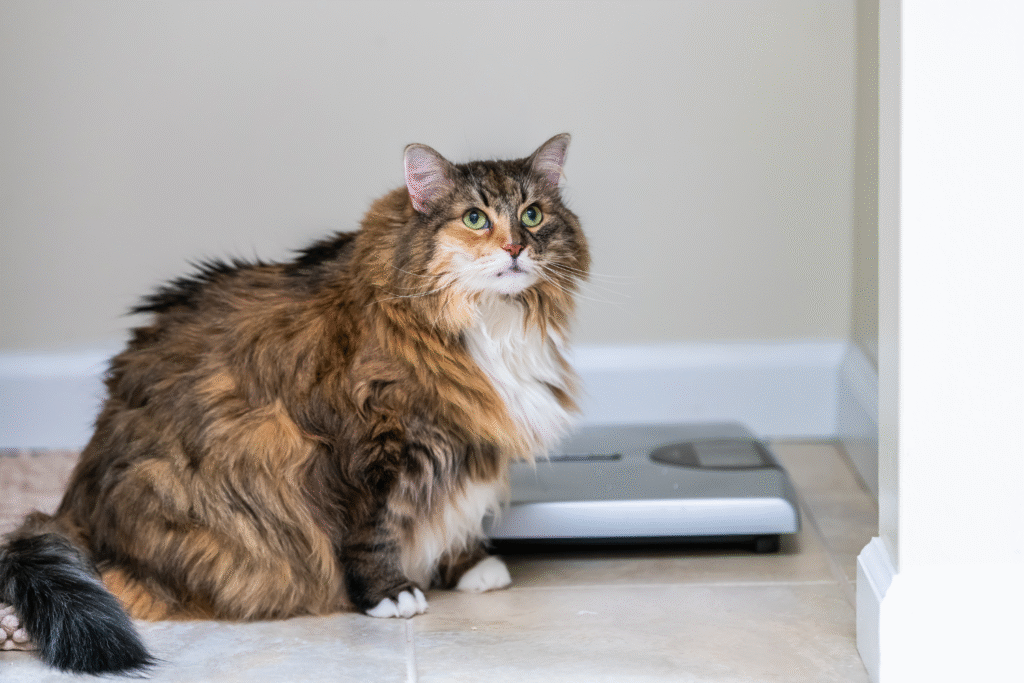
For cats, gaining just a few extra pounds can silently rewrite their biology. Obesity isn’t just about appearance—it’s a cascade of organ strain, metabolic slowdown, and inflammation that often goes unseen until it’s too late. The tragedy is that most owners never realize the danger because the changes happen gradually, masked by fluff, fur, and personality.
Modern indoor life makes it even easier for cats to slide into danger. The calorie-rich treats, limited exercise, and oversized portions meant as “love” can all add up to the slow unraveling of their health. Here’s how it starts—and how to stop it.
1. Excess fat suffocates internal organs over time.

When a cat carries more weight than its frame can handle, fat begins accumulating around vital organs like the liver and heart. This isn’t harmless padding—it compresses tissue, restricting movement and oxygen flow. According to the American Veterinary Medical Association, this internal fat leads to inflammation that progressively weakens organ function and shortens lifespan.
Cats don’t show pain the way humans do, so by the time breathing changes or lethargy appear, much of the damage is already underway. The process is quiet but continuous, a slow reshaping of the body’s core systems that becomes harder to reverse with age.
2. Diabetes sneaks in when glucose regulation collapses.
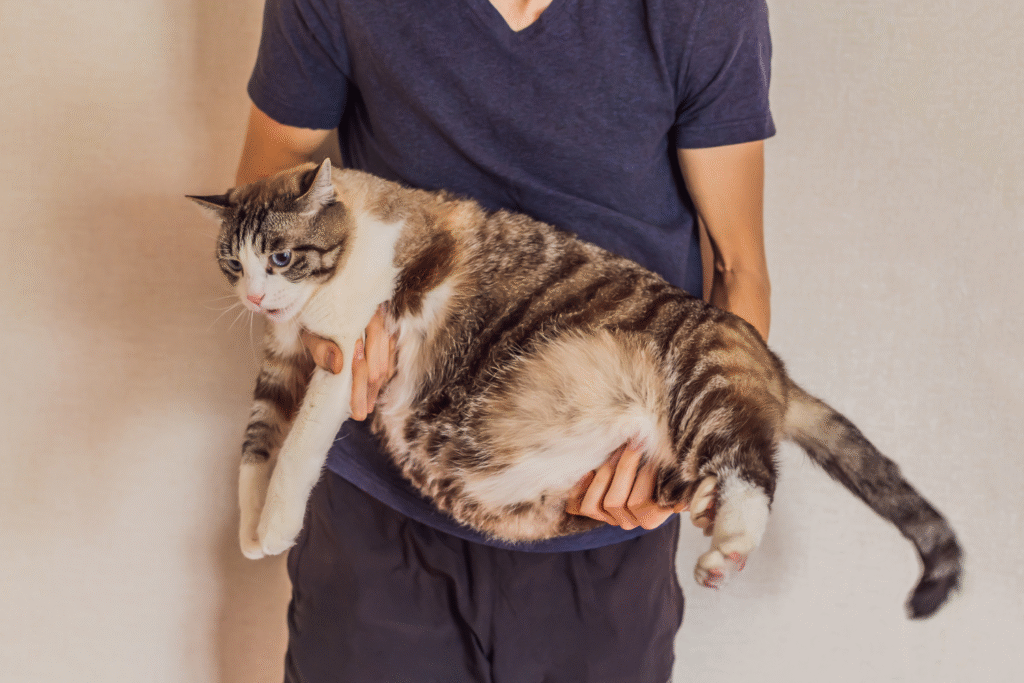
Excess body fat causes cells to resist insulin, pushing blood sugar levels higher until diabetes sets in, as reported by the Cornell Feline Health Center. Once this happens, the pancreas struggles to keep up, and the body enters a dangerous metabolic tug-of-war that affects nearly every system.
Most owners notice only subtle thirst or extra trips to the litter box at first. Behind the scenes, though, glucose spikes damage blood vessels, eyesight, and kidney function. Early detection through routine bloodwork is critical, since diet and weight control can often reverse the trend before it becomes lifelong.
3. Fatty liver disease develops faster than most realize.
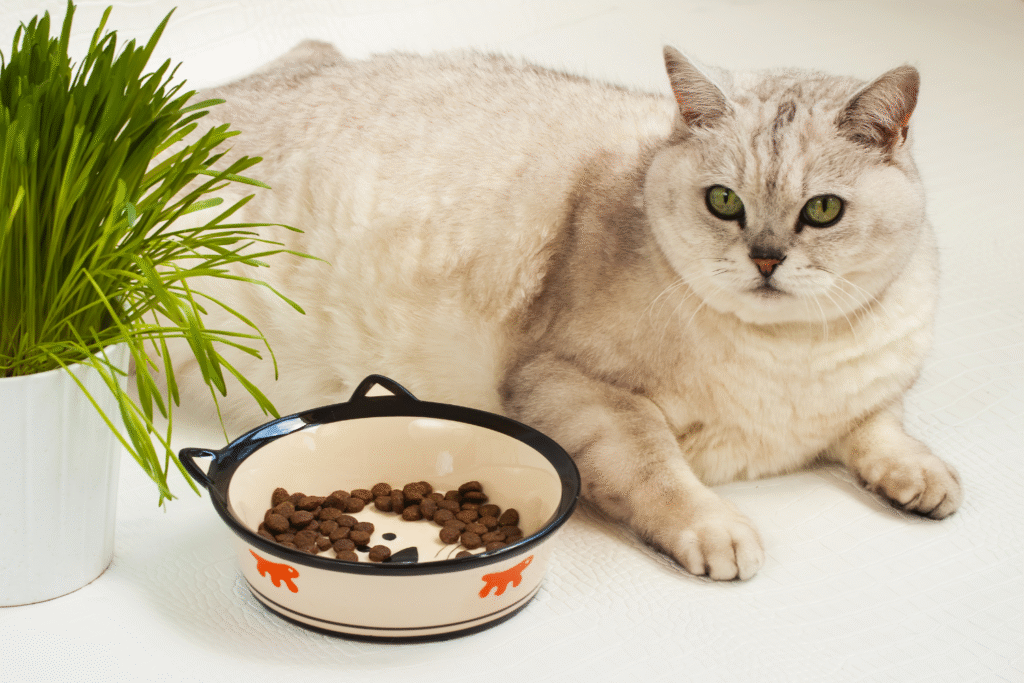
A cat’s liver is highly sensitive to rapid fat accumulation. As stated by PetMD, when obese cats stop eating for even a few days, their bodies flood the liver with fat for fuel, leading to hepatic lipidosis—a condition often fatal without prompt intervention. It can happen after stress, illness, or simply a diet change.
This is why overweight cats are at such high risk during any period of fasting. The liver’s sudden overload disrupts bile production and toxin filtering, leaving cats lethargic, jaundiced, and weak. Even minor weight control helps prevent this domino effect.
4. Joints buckle under more strain than they’re built for.
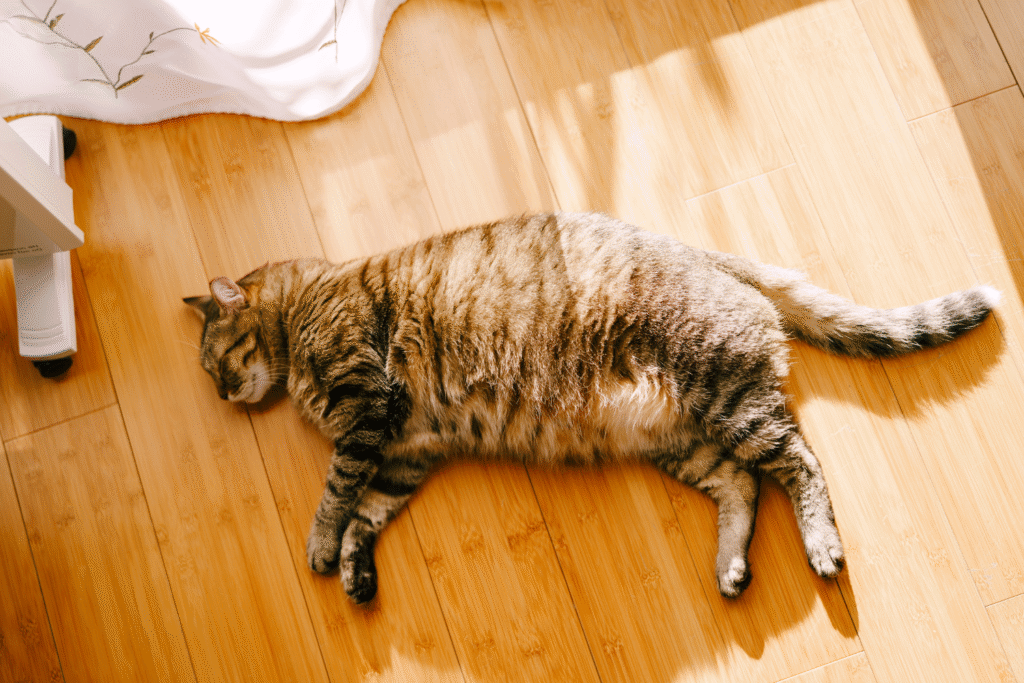
Every extra pound of fat translates into multiple pounds of added force on joints. Over time, that pressure erodes cartilage and inflames surrounding tissue, resulting in chronic arthritis. It’s not just older cats that suffer—many middle-aged ones show subtle stiffness years before limping starts.
The ache makes movement less appealing, which compounds the issue by reducing activity further. This self-feeding cycle of pain and inactivity becomes one of the hardest to break once it begins. Early mobility checks and low-impact play can delay the progression dramatically.
5. Breathing becomes shallow as chest pressure builds.
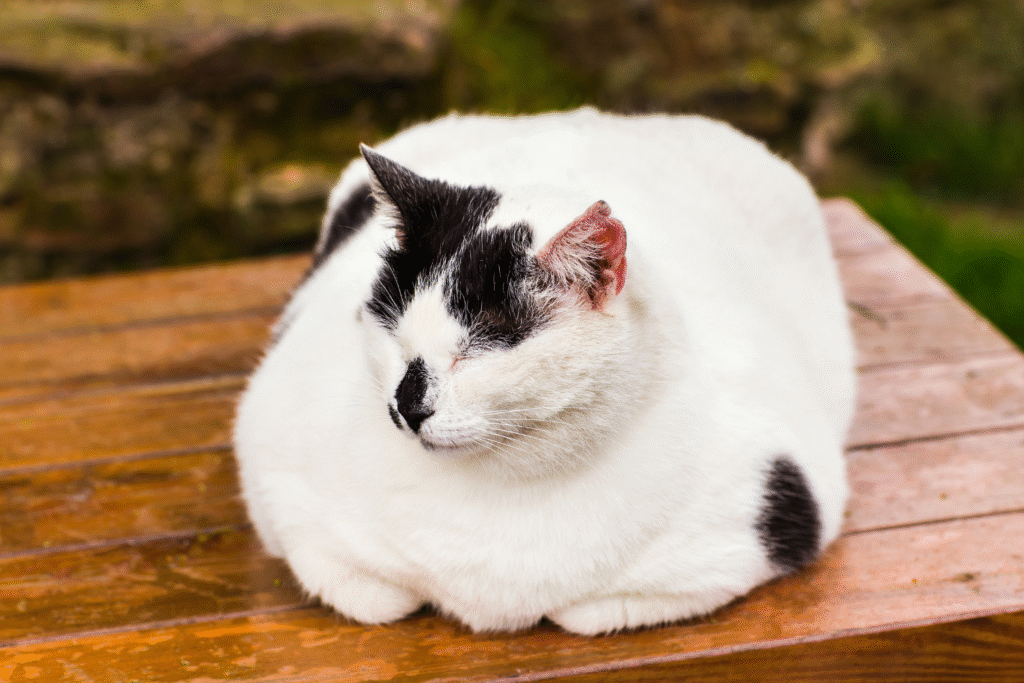
Obesity narrows airways and limits lung expansion. You may notice your cat panting after minimal play or choosing cooler resting spots because heat regulation worsens. This isn’t laziness; it’s restricted airflow paired with higher internal heat production.
Fat deposits around the diaphragm also make breathing effortful, especially in breeds with flatter faces. When breathing turns into work, sleep quality plummets, and stress hormones rise, further feeding metabolic instability. It’s one of the most overlooked consequences of feline obesity.
6. The heart must labor harder to maintain circulation.
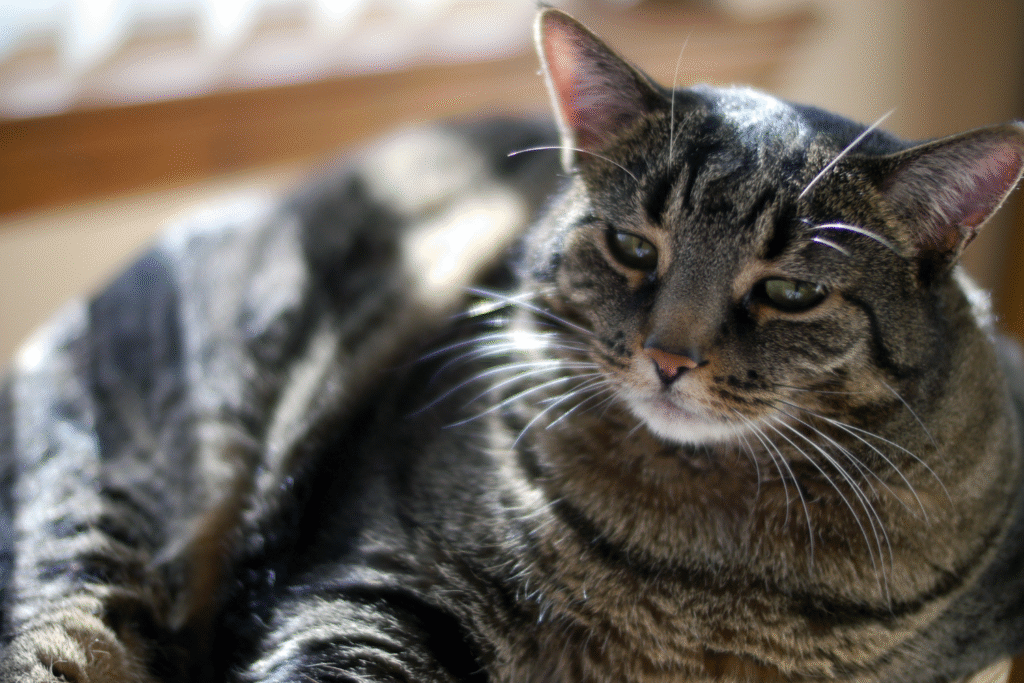
Carrying excess weight forces the heart to pump with greater pressure, thickening the muscle walls over time. This strain gradually reduces efficiency, leading to hypertension or congestive heart failure. Cats don’t pant or wheeze like dogs, so these signs often stay hidden.
A vet may catch the change first through an abnormal heartbeat or high blood pressure reading. For owners, reduced stamina or reluctance to play can be subtle indicators that the heart’s endurance is slipping under the physical burden.
7. Inflammation becomes a constant background battle.
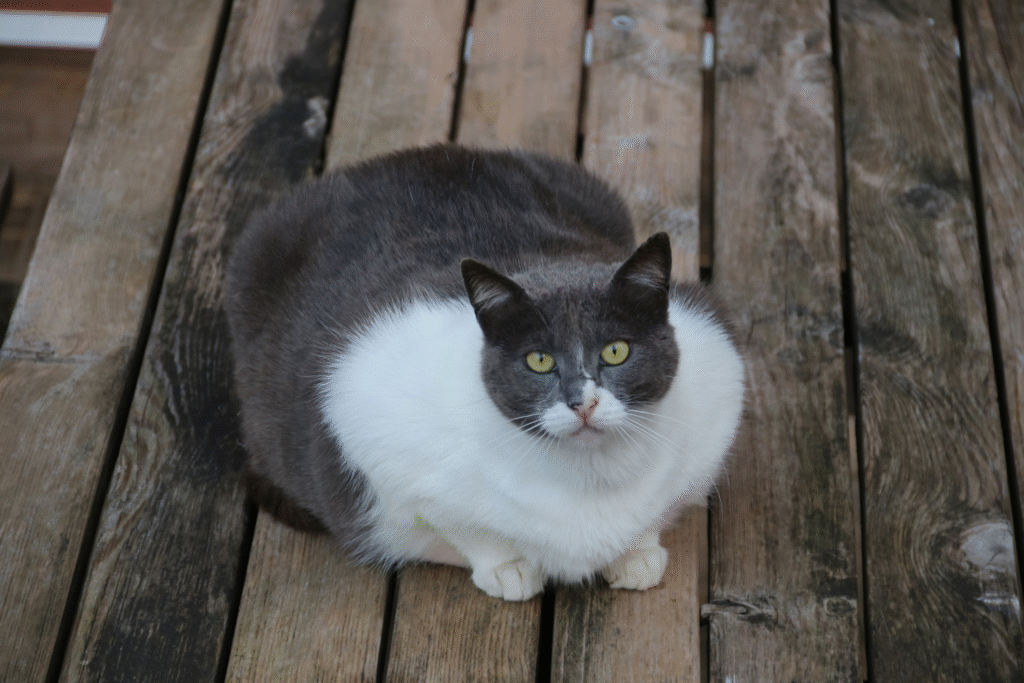
Fat tissue isn’t passive—it releases inflammatory compounds into the bloodstream. This creates a chronic low-grade immune response that wears down organs and accelerates aging. The result is a cat that looks healthy but internally fights an invisible war.
That constant inflammation also weakens recovery after injuries or infections. Healing slows, immunity falters, and the risk of chronic diseases multiplies. The more weight a cat carries, the longer this inflammatory state lingers, quietly shortening life expectancy.
8. Grooming habits decline as flexibility disappears.
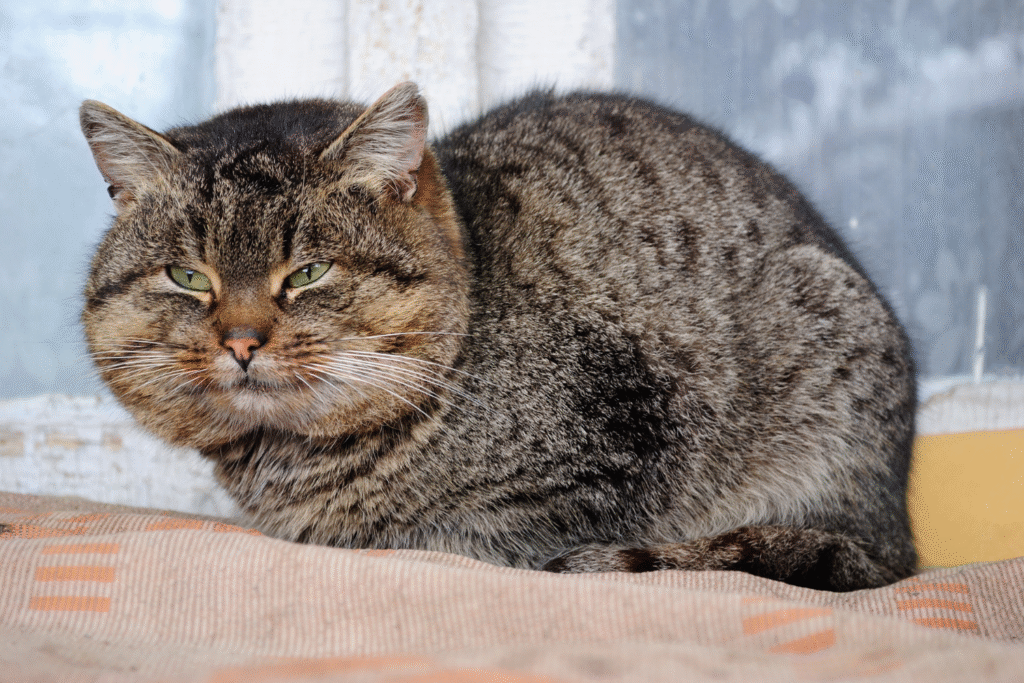
Overweight cats often can’t twist or reach their lower backs, leading to greasy fur, dandruff, and skin infections. They may seem indifferent about grooming, but it’s physical limitation, not laziness. The discomfort of bending becomes enough reason to stop trying.
This self-neglect doesn’t just affect appearance—it signals growing physical strain. When cats can’t care for themselves, secondary health issues like matted fur or yeast buildup take hold, adding layers of discomfort to an already taxed body.
9. Temperature regulation falters during heat or stress.
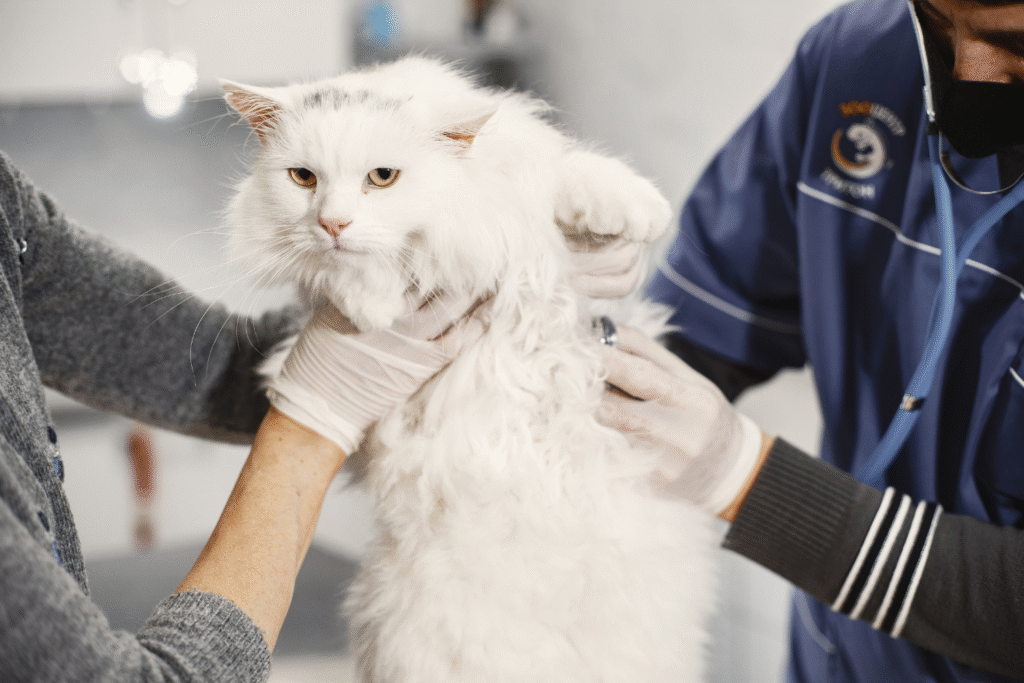
A healthy cat’s lean body allows heat to dissipate efficiently, but layers of fat act like insulation. Overweight cats overheat easily, especially during warm months or under stress. They might pant, spread out on cool floors, or seek shade more than usual.
Their risk of heat exhaustion rises sharply because the liver and heart are already working overtime. Even mild temperatures can feel oppressive when metabolic systems can’t balance internal warmth against external heat. This is often when owners realize how deep the issue runs.
10. Life expectancy quietly drops, often by years.
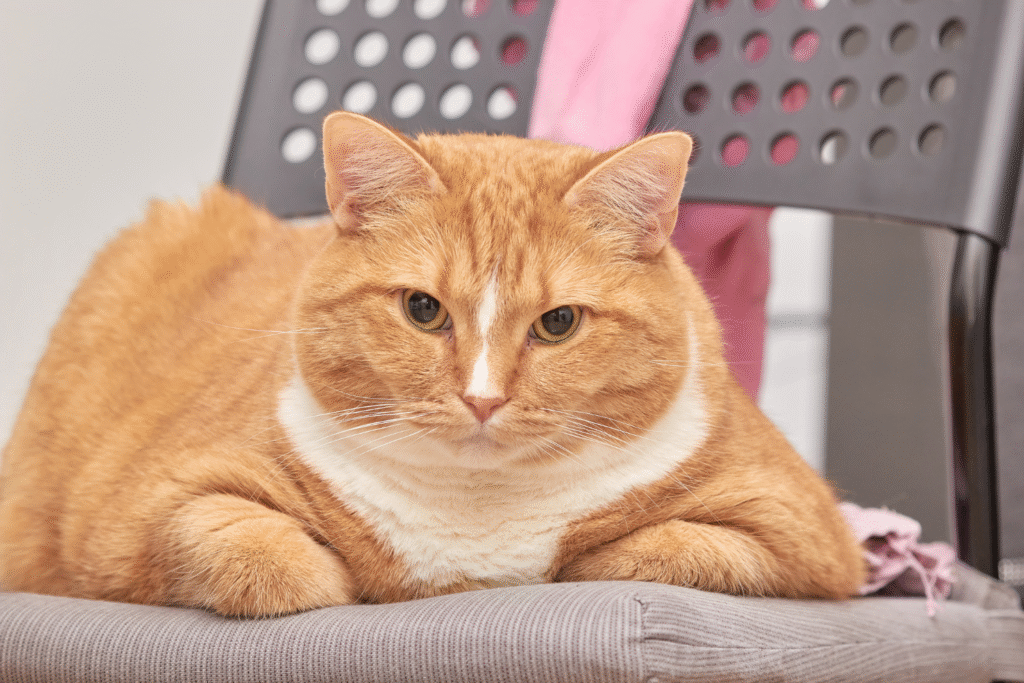
Research shows that obese cats live significantly shorter lives, often losing two to five years compared to lean counterparts. The cumulative impact of metabolic strain, organ failure, and chronic inflammation eventually catches up, even if symptoms seemed mild for years.
Prevention, though, is incredibly achievable. Controlled portion sizes, daily play sessions, and regular vet weigh-ins can reverse risk faster than most expect. Obesity doesn’t announce itself loudly—it creeps. But the earlier owners act, the more years of energy, curiosity, and companionship they preserve.
